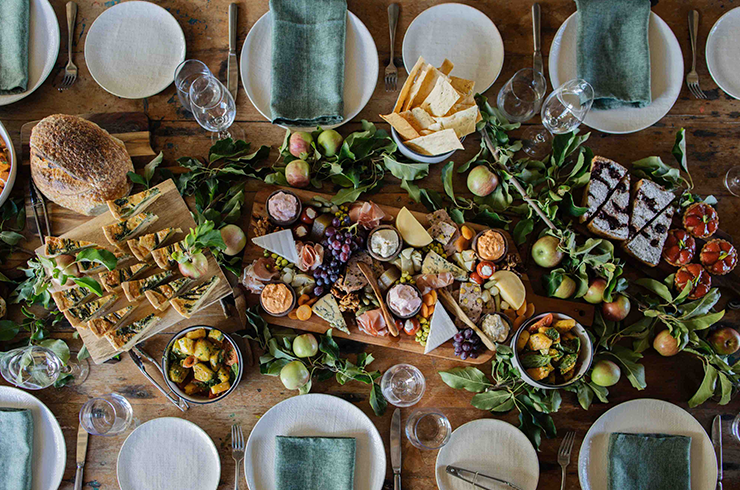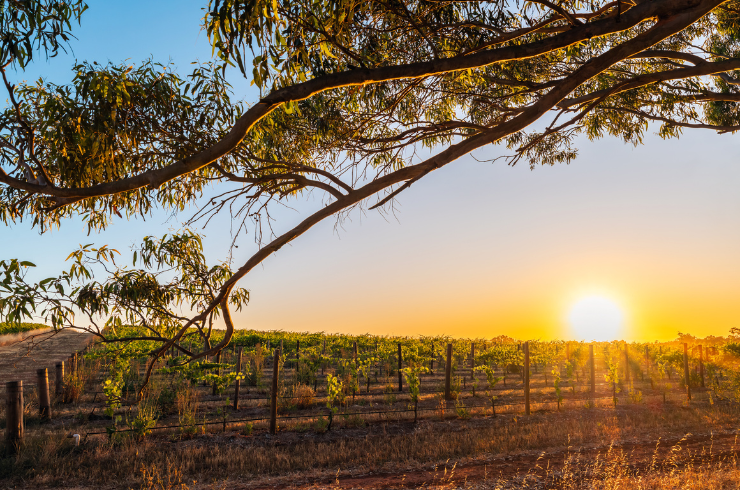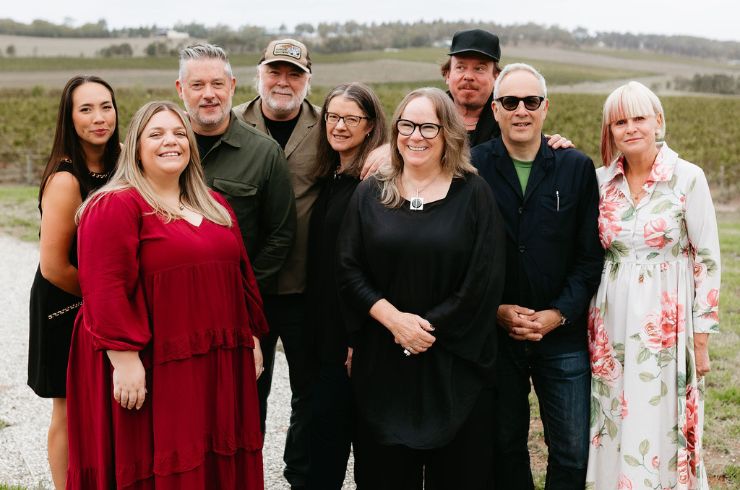Champagne is so often regaled as the greatest sparkling wine on the planet, and the most beloved for celebrations. It hails from the specifically delineated region of Champagne, made up of almost 35,000 hectares to the east of Paris. The region has a long, complicated, endlessly fascinating and, at times, very violent history.
The great fallacy surrounding Champagne’s sparkling wines is that all of them are the same, but this couldn’t be further from the truth. Elegant styles such as Taittinger’s Comtes or Perrier-Jouet’s Belle Epoque are chalk and cheese when compared with the richly concentrated and powerful wines of Bollinger and Krug.
The key Champagne styles
The most common style is the non-vintage Champagne, sometimes called multi-vintage, which more aptly describes the wines because their material is blended from numerous years. In Australia, NV sales dominate, though there was a time a few decades ago when we were well known for a high consumption of vintage Champagnes. Unlike most wine regions, not every ‘year’ is declared as a vintage, though climate change and improved viticultural practices mean we are seeing more and more declarations. It was the inability of the region to offer vintage wines each year that gave rise to the development of the non-vintage style.
The rosé category is growing expeditiously. Champagne is the only French region permitted to make rosé by two methods – either by the addition of a small quantity of red wine from the region, or by giving the juice a little skin contact with the grapes. The choice is up to the maker, and neither is superior. Too often, rosés are paired with dessert, which is usually a mistake. Duck, veal and many other savoury dishes work brilliantly with a good rosé Champagne.
Blanc de blancs Champagne is made from 100 per cent white grapes, or chardonnay, given it’s the one white grape of the three permitted in Champagne’s production, alongside pinot noir and pinot meunier. More common that blanc de noirs, it is a much-loved style producing elegant Champagnes. Wines such as Salon, Taittinger’s Comtes de Champagne, and Krug’s Clos du Mesnil are a few of the many excellent blanc de blancs. In the Ian Fleming 007 novels, Bond often drank Taittinger’s Comtes, leading to the impression at the time that blanc de blancs must be the best of all Champagnes.
Blanc de noirs comes from the juice of either or both the permitted red varieties. It is a less common style, but a growing category. The wines often have nuances of red berries and can be more muscular, but they can veer in to the more burly, even clumsy, arena. Billecart-Salmon, Krug and Bollinger have superb, but expensive, examples. We are also seeing an increasing number of single vineyard Champagnes. For some, this goes against everything the region stands for, while for others, it is a fascinating exploration of the region’s terroir. Growers are especially focusing on this style.
Another recent trend has been for non-dosage Champagnes, where the wines don’t receive any sweetner or sugar during production. Louis Roederer has a fine example, but be aware that many can be slilghtly hard in terms of their mouthfeel without that touch of sweetness. They also rarely age well.
The most fabled category is prestige Champagnes, or the best of the best. These can be any style – NV, vintage, rosé, blanc de blancs… Dom Perignon, Cristal, RD, Belle Epoque, Comtes and Sir Winston Churchill are some of the many fine examples. They are indeed glorious wines, and some spend extra time on lees, such as Bollinger’s RD.
The best Champagne vintages
One question often asked is whether Champagnes age. Absolutely they do. Good ones can age for decades, but good storage is critical. As for the best vintages, we are starting to see a number of 2012s on the market – a stellar year, and the best since 2008 (2018 will be the next superstar). Don’t hesitate to fill your cellar.
Another brilliant option is the 2008, so grab what you can, but there are also very fine Champagnes from 2010, 2009, 2007, 2006, 2005 and especially 2004. The 2002 probably eclipses all of these, until the ‘08s. The ’01 and ’03 were lesser years, and 2000 has flown under the radar, but is now revealing its glories. The 1998 and 1999 vintages both have their advocates (it’s the ’98 for me), while the 1996 is an all-time classic, and 1995 would be even more adored if the ’96 hadn’t overshadowed it.
Going even further back, 1990, 1989 and 1988 were an amazing trio, and all have their devotees. For me, though, 1988 is perhaps the greatest of the past five decades.
Champagnes to try
Non-vintage
NV Palmer Blanc de Blancs, $120
A fine example of a non-vintage Campagne, not to mention a blanc de blancs and a co-operative. This is fresh and rich.
Vintage
2012 Pol Roger, $140
A great producer with a classic vintage, this is elegance, concentration and persistence in one.
Rosé
Nicolas Feuillatte Reserve Exclusive Rosé, $80
Fresh yet richly flavoured, with delicious red berry notes.
Blanc de blancs
2004 Perrier-Jouet Belle Epoque Blanc de Blancs, $700
Ethereal and majestic, Champagne doesn’t get much better.
Low dosage
2009 Louis Roederer Et Phillpe Starck Brut Nature, $150
From a warm vintage, which supports the style, this is a generous and lingering effort.
Prestige
2008 Dom Perignon, $330
This is one of the greatest Doms ever released. Enough said.
Latest Articles
-
Win
Win a stunning collection of Plumm glassware and wine, valued at over $500
1 day ago -
Wine Lists
Top Christmas wines under $30 (and five worth splurging on)
1 day ago -
Wine Lists
Why you should drink Australian this festive season (and 80 of our best wines to try)
1 day ago -
From the tasting team
The Aussie wines the Halliday Tasting Team will be opening this festive season
1 day ago



